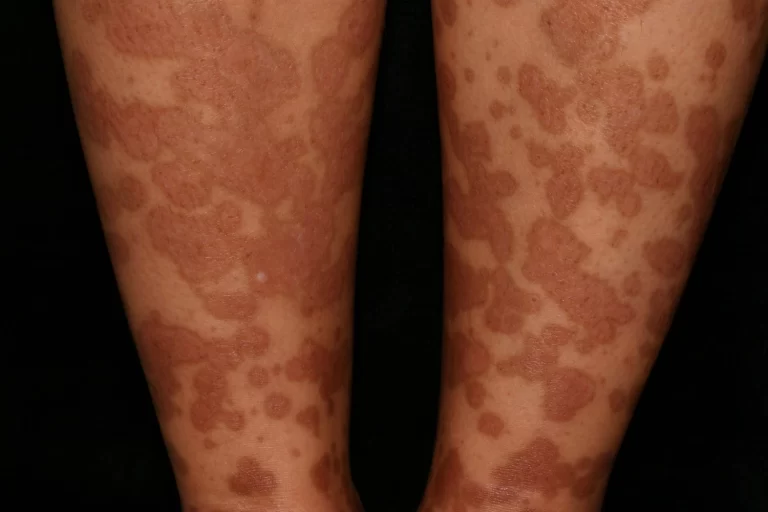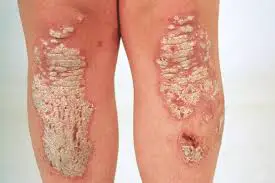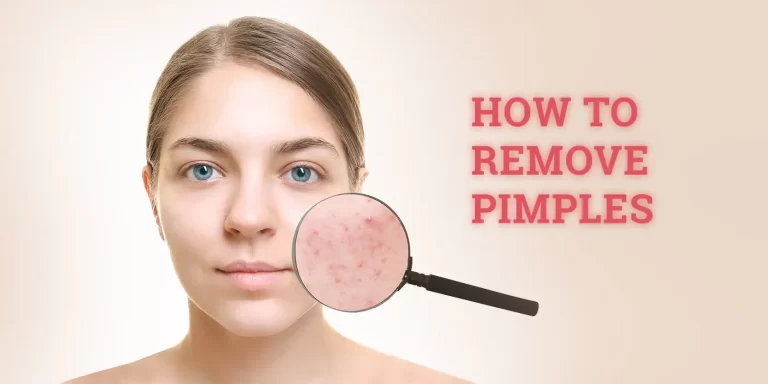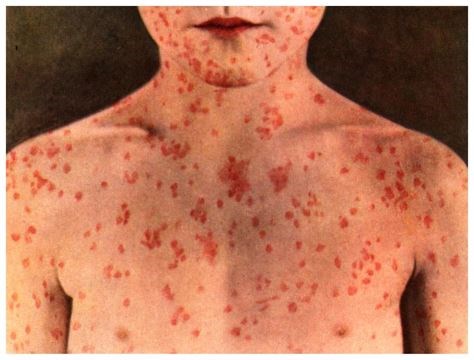AIDS AND PREVENTION
INTRODUCTION OF HIV
HIV is a virus that damages the immune system. The immune system helps the body fight off infections. Untreated HIV infects and kills CD4 cells, which are a type of immune cell called T cells. Over time, as HIV kills more CD4 cells, the body is more likely to get various types of infections and cancers.
HIV is transmitted through bodily fluids that include:
Blood
Semen
Vaginal and rectal fluids
Breast milk
The virus doesn’t spread in air or water, or through casual contact.
HIV is a lifelong condition and currently there is no cure, although many scientists are working to find one. However, with medical care, including treatment called antiretroviral therapy, it’s possible to manage HIV and live with the virus for many years.
Without treatment, a person with HIV is likely to develop a serious condition called AIDS. At that point, the immune system is too weak to fight off other diseases and infections. Untreated, life expectancy with AIDS is about three years. With antiretroviral therapy, HIV can be well-controlled and life expectancy can be nearly the same as someone who has not contracted HIV.
It’s estimated that 1.1 million Americans are currently living with HIV. Of those people, 1 in 5 don’t know they have the virus.
HIV can cause changes throughout the body. Learn about the effects of HIV on the different systems in the body.
WHAT IS AIDS
AIDS is a disease that can develop in people with HIV. It’s the most advanced stage of HIV. But just because a person has HIV doesn’t mean they’ll develop AIDS.
HIV kills CD4 cells. Healthy adults generally have a CD4 count of 500 to 1,500 per cubic millimeter. A person with HIV whose CD4 count falls below 200 per cubic millimeter will be diagnosed with AIDS.
A person can also be diagnosed with AIDS if they have HIV and develop an opportunistic infection or cancer that’s rare in people who don’t have HIV. An opportunistic infection, such as pneumonia, is one that takes advantage of a unique situation, such as HIV.
Untreated, HIV can progress to AIDS within a decade. There’s no cure for AIDS, and without treatment, life expectancy after diagnosis is about three years. This may be shorter if the person develops a severe opportunistic illness. However, treatment with antiretroviral drugs can prevent AIDS from developing.
If AIDS does develop, it means that the immune system is severely compromised. It’s weakened to the point where it can no longer fight off most diseases and infections. That makes the person vulnerable to a wide range of illnesses, including:
Pneumonia
Tuberculosis
Oral thrush, a fungal infection in the mouth or throat
Cytomegalovirus (CMV), a type of herpes virus
Cryptococcal meningitis, a fungal infection in the brain
Toxoplasmosis, a brain infection caused by a parasite
Cryptosporidiosis, an infection caused by an intestinal parasite
Cancer, including Kaposi’s sarcoma (KS) and lymphoma
The shortened life expectancy linked with untreated AIDS isn’t a direct result of the syndrome itself. Rather, it’s a result of the diseases and complications that arise from having an immune system weakened by AIDS. Learn more about possible complications that can arise from HIV and AIDS.
HIV and AIDS:
To develop AIDS, a person has to have contracted HIV. But having HIV doesn’t necessarily mean that someone will develop AIDS.
Cases of HIV progress through three stages:
stage 1: acute stage, the first few weeks after transmission
stage 2: clinical latency, or chronic stage
stage 3: AIDS
As HIV lowers the CD4 cell count, the immune system weakens. A typical adult’s CD4 count is 500 to 1,500 per cubic millimeter. A person with a count below 200 is considered to have AIDS.
There is no cure for HIV, but it can be controlled. People with HIV often have a near-normal lifespan with early treatment with antiretroviral therapy. Along those same lines, there’s technically no cure for AIDS. However, treatment can increase a person’s CD4 count to the point where they’re considered to no longer have AIDS. (This point is a count of 200 or higher.) Also, treatment can typically help manage opportunistic infections.
HIV and AIDS are related, but they’re not the same thing.
HIV TRANSMISSION :
Anyone can contract HIV. The virus is transmitted in bodily fluids that include:
blood
semen
vaginal and rectal fluids
breast milk
Some of the ways HIV is spread from person to person include:
Through vaginal or anal sex — the most common route of transmission, especially among men who have sex with men
By sharing needles, syringes, and other items for injection drug use
By sharing tattoo equipment without sterilizing it between uses
During pregnancy, labor, or delivery from a woman to her baby
During breastfeeding
Through “pre-mastication,” or chewing a baby’s food before feeding it to them
Through exposure to the blood of someone living with HIV, such as through a needle stick
HIV DOES NOT SPREAD THROUGH;.
Skin-to-skin contact
Hugging, shaking hands, or kissing
Air or water
Sharing food or drinks, including drinking fountains
Saliva, tears, or sweat (unless mixed with the blood of a person with HIV)
Sharing a toilet, towels, or bedding
Mosquitoes or other insects
It’s important to note that if a person with HIV is being treated and has a persistently undetectable viral load, it’s virtually impossible to transmit the virus to another person.
CAUSES OF HIV
HIV is a variation of a virus that infects African chimpanzees. Scientists suspect the simian immunodeficiency virus (SIV) jumped from chimps to humans when people consumed infected chimpanzee meat. Once inside the human population, the virus mutated into what we now know as HIV. This likely occurred as long ago as the 1920s.
HIV spread from person to person throughout Africa over the course of several decades. Eventually, the virus migrated to other parts of the world. Scientists first discovered HIV in a human blood sample in 1959.
DIAGNOSIS
Several different tests can be used to diagnose HIV. Healthcare providers determine which test is best for each person.
ANTIBODY/ANTIGEN TEST
Antibody/antigen tests are the most commonly used tests. They can show positive results typically within 18–45 days after someone initially contracts HIV.
These tests check the blood for antibodies and antigens. An antibody is a type of protein the body makes to fight an infection. An antigen, on the other hand, is the part of the virus that activates the immune system.
ANTIBODY TEST
These tests check the blood solely for antibodies. Between 23 and 90 days after transmission, most people will develop detectable HIV antibodies, which can be found in the blood or saliva.
NUCLEIC ACID TEST (NAT)
This expensive test isn’t used for general screening. It’s for people who have early symptoms of HIV or have a known risk factor. This test doesn’t look for antibodies; it looks for the virus itself. It takes from 5 to 21 days for HIV to be detectable in the blood. This test is usually accompanied or confirmed by an antibody test.
HIV WINDOW PERIOD
As soon as someone contracts HIV, it starts to reproduce in their body. The person’s immune system reacts to the antigens (parts of the virus) by producing antibodies (cells that fight the virus).
The time between exposure to HIV and when it becomes detectable in the blood is called the HIV window period. Most people develop detectable HIV antibodies within 23 to 90 days after infection.
If a person takes an HIV test during the window period, it’s likely they’ll receive a negative result. However, they can still transmit the virus to others during this time. If someone thinks they may have been exposed to HIV but tested negative during this time, they should repeat the test in a few months to confirm (the timing depends on the test used). And during that time, they need to use condoms to prevent possibly spreading HIV.
Someone who tests negative during the window might benefit from post-exposure prophylaxis (PEP). This is medication taken after an exposure to prevent getting HIV. PEP needs to be taken as soon as possible after the exposure; it should be taken no later than 72 hours after exposure, but ideally before then.
Another way to prevent getting HIV is pre-exposure prophylaxis (PrEP). A combination of HIV drugs taken before potential exposure to HIV, PrEP can lower the risk of contracting or spreading HIV when taken consistently.
Timing is important when testing for HIV.
EARLY SYMPTOMS OF HIV
The first few weeks after someone contracts HIV is called the acute infection stage. During this time, the virus reproduces rapidly. The person’s immune system responds by producing HIV antibodies. These are proteins that fight infection.
During this stage, some people have no symptoms at first. However, many people experience symptoms in the first month or two after contracting the virus, but often don’t realize they’re caused by HIV. This is because symptoms of the acute stage can be very similar to those of the flu or other seasonal viruses. They may be mild to severe, they may come and go, and they may last anywhere from a few days to several weeks.
Early symptoms of HIV can include:
Fever
Chills
Swollen lymph nodes
General aches and pains
Skin rash
Sore throat
Headache
Nausea
Upset stomach
Because these symptoms are similar to common illnesses like the flu, the person with them might not think they need to see a healthcare provider. And even if they do, their healthcare provider might suspect the flu or mononucleosis and might not even consider HIV.
Whether a person has symptoms or not, during this period their viral load is very high. The viral load is the amount of HIV found in the bloodstream. A high viral load means that HIV can be easily transmitted to someone else during this time.
Initial HIV symptoms usually resolve within a few months as the person enters the chronic, or clinical latency, stage of HIV. This stage can last many years or even decades with treatment.
HIV symptoms can vary from person to person. Learn more about the early symptoms of HIV.
SYMPTOMS
After the first month or so, HIV enters the clinical latency stage. This stage can last from a few years to a few decades. Some people don’t have any symptoms during this time, while others may have minimal or nonspecific symptoms. A nonspecific symptom is a symptom that doesn’t pertain to one specific disease or condition.
These nonspecific symptoms may include:
Headaches and other aches and pains
Swollen lymph nodes
Recurrent fevers
Night sweats
Fatigue
Nausea
Vomiting
Diarrhea
Weight loss
Skin rashes
Recurrent oral or vaginal yeast infections
Pneumonia
Shingles
As with the early stage, HIV is still infectious during this time even without symptoms and can be transmitted to another person. However, a person won’t know they have HIV unless they get tested. If someone has these symptoms and thinks they may have been exposed to HIV, it’s important that they get tested.
HIV symptoms at this stage may come and go, or they may progress rapidly. This progression can be slowed substantially with treatment. With the consistent use of this antiretroviral therapy, chronic HIV can last for decades and will likely not develop into AIDS, if treatment was started early enough. Learn more about how HIV symptoms can progress over time.
Stevens-Johnson syndrome (SJS) is a rare allergic reaction to HIV medication. Symptoms include fever and swelling of the face and tongue. A blistering rash, which can involve the skin and mucous membranes, appears and spreads quickly. When 30 percent of the skin is affected it’s called toxic epidermal necrolysis, which is a life-threatening condition. If this develops, emergency medical care is needed.
While rash can be linked with HIV or HIV medications, it’s important to keep in mind that rashes are common and can have many other causes. Learn more about HIV rash.
HIV SYMPTOMS IN MAN :
Symptoms of HIV vary from person to person, but they’re similar in men and women. These symptoms can come and go or get progressively worse.
If a person has been exposed to HIV, they may also have been exposed to other sexually transmitted infections (STIs). These include gonorrhea, chlamydia, syphilis, and trichomoniasis. Men may be more likely than women to notice symptoms of STIs such as sores on their genitals. However, men typically don’t seek medical care as often as women. Learn more about HIV symptoms in men.
HIV symptoms in women: Is there a difference?
For the most part, symptoms of HIV are similar in men and women. However, symptoms they experience overall may differ based on the different risks men and women face if they have HIV.
Both men and women with HIV are at increased risk of sexually transmitted infections (STIs). However, women may be less likely than men to notice small spots or other changes to their genitals.
IN ADDITION , WOMEN WITH HIV ARE AT RISK OF-
Recurrent vaginal yeast infections
Other vaginal infections, including bacterial vaginosis
Pelvic inflammatory disease (PID)
Menstrual cycle changes
Human papillomavirus (HPV), which can cause genital warts and lead to cervical cancer
While not related to HIV symptoms, another risk for women with HIV is that the virus can be transmitted to a baby during pregnancy. However, antiretroviral therapy is considered safe during pregnancy. Women who are treated with antiretroviral therapy are at very low risk of passing HIV to their baby during pregnancy and delivery.
Breastfeeding is also affected in women with HIV. The virus can be passed to a baby through breast milk. In the United States and other settings where formula is accessible and safe, it’s recommended that women with HIV not breastfeed their babies. For these women, use of formula is encouraged. Options besides formula include pasteurized banked human milk (https://www.hmbana.org).
For women who may have been exposed to HIV, it’s important to know what symptoms to look for. Learn more about HIV symptoms in women.
SYMPTOMS OF AIDS
AIDS refers to acquired immunodeficiency syndrome. With this condition, the immune system is weakened due to HIV that’s typically gone untreated for many years. If HIV is found and treated early with antiretroviral therapy, a person will usually not develop AIDS.
People with HIV may develop AIDS if their HIV is not diagnosed until late, or if they know they have HIV but don’t consistently take their antiretroviral therapy. They may also develop AIDS if they have a type of HIV that’s resistant to (doesn’t respond to) the antiretroviral treatment.
Without proper and consistent treatment, people living with HIV can develop AIDS sooner. By that time, the immune system is quite damaged and has a harder time fighting off infection and disease. With the use of antiretroviral therapy, a person can maintain chronic HIV infection without developing AIDS for decades.
TREATMENT OF HIV
Treatment should begin as soon as possible after a diagnosis of HIV, regardless of viral load. The main treatment for HIV is antiretroviral therapy, a combination of daily medications that stop the virus from reproducing. This helps protect CD4 cells, keeping the immune system strong enough to fight off disease.
Antiretroviral therapy helps keep HIV from progressing to AIDS. It also helps reduce the risk of transmitting HIV to others.
When treatment is effective, the viral load will be “undetectable.” The person still has HIV, but the virus is not visible in test results. However, the virus is still in the body. And if that person stops taking antiretroviral therapy, the viral load will increase again and the HIV can again start attacking CD4 cells. Learn more about how HIV treatments work.
HIV MEDICATIONS
These antiretroviral medications are grouped into six classes:
Nucleoside reverse transcriptase inhibitors (NRTIs)
Non-nucleoside reverse transcriptase inhibitors (NNRTIs)
Protease inhibitors
Fusion inhibitors
CCR5 antagonists, also known as entry inhibitors
Integrase strand transfer inhibitors
TREATMENT REGIMEN
The U.S. Department of Health and Human Services (HHS) generally recommends a starting regimen of three HIV medications from at least two of these drug classes. This combination helps prevent HIV from forming resistance to medications. (Resistance means the drug no longer works to treat the virus.)
SYMPTOMS OF AIDS
Recurrent fever
Chronic swollen lymph glands, especially of the armpits, neck, and groin
Chronic fatigue
Night sweats
Dark splotches under the skin or inside the mouth, nose, or eyelids
Sores, spots, or lesions of the mouth and tongue, genitals, or anus
Bumps, lesions, or rashes of the skin
Recurrent or chronic diarrhea
Rapid weight loss
Neurologic problems such as trouble concentrating, memory loss, and confusion
Anxiety and depression
Antiretroviral therapy controls the virus and usually prevents progression to AIDS. Other infections and complications of AIDS can also be treated. That treatment must be tailored to the individual needs of the person.
Many of the antiretroviral medications are combined with others so that a person with HIV typically takes only one or two pills a day.
A healthcare provider will help a person with HIV choose a regimen based on their overall health and personal circumstances. These medications must be taken every day, exactly as prescribed. If they’re not taken appropriately, viral resistance can develop, and a new regimen may be needed.
Blood testing will help determine if the regimen is working to keep the viral load down and the CD4 count up. If an antiretroviral therapy regimen isn’t working, the person’s healthcare provider will switch them to a different regimen that’s more effective.
SIDE EFFECTS AND COSTS
Side effects of antiretroviral therapy vary and may include nausea, headache, and dizziness. These symptoms are often temporary and disappear with time. Serious side effects can include swelling of the mouth and tongue and liver or kidney damage. If side effects are severe, the medications can be adjusted.
Costs for antiretroviral therapy vary according to geographic location and type of insurance coverage. Some pharmaceutical companies have assistance programs to help lower the cost. Learn more about the drugs used to treat HIV.
HIV PREVENTION
Although many researchers are working to develop one, there’s currently no vaccine available to prevent the transmission of HIV. However, taking certain steps can help prevent the spread of HIV.
SAFER SEX
The most common way for HIV to spread is through anal or vaginal sex without a condom. This risk can’t be completely eliminated unless sex is avoided entirely, but the risk can be lowered considerably by taking a few precautions. A person concerned about their risk of HIV should:
GET TESTED FOR HIV-It’s important they learn their status and that of their partner.
GET TESTED FOR SEXUALLY TRANSMITTED INFECTIONS (STIs). If they test positive for one, they should get it treated, because having an STI increases the risk of contracting HIV.
USE CONDOMS- They should learn the correct way to use condoms and use them every time they have sex, whether it’s through vaginal or anal intercourse. It’s important to keep in mind that pre-seminal fluids (which come out before male ejaculation) can contain HIV.
LIMIOT THEIR SEXUAL PARTNERS- They should have one sexual partner with whom they have an exclusive sexual relationship.
Take their medications as directed if they have HIV. This lowers the risk of transmitting the virus to their sexual partner.
Shop for condoms.
The most important thing is to start antiretroviral treatment as soon as possible. By taking medications exactly as prescribed, people living with HIV can keep their viral load low and their immune system strong. It’s also important to follow up with a healthcare provider regularly.
Of course, many things affect life expectancy for a person with HIV. Among them are:
CD4 cell count
Viral load
Serious HIV-related illnesses, including hepatitis infection
Drug use
Smoking
Access, adherence, and response to treatment
HIV is a complicated virus. It mutates (changes) rapidly and is often able to fend off immune system responses. Only a small number of people who have HIV develop broadly neutralizing antibodies, the kind of antibodies that can fight a range of HIV strains.
While there’s still no vaccine to prevent HIV, people with HIV can benefit from other vaccines to prevent HIV-related illnesses, such as:
pneumonia
influenza
hepatitis A and B
meningitis
shingles








